Getting Tangled in the Star Wars EU
I do mean Tangled with a capital T, as in the Disney movie for kids. It’s still reeling fans in at the box office, yet the DVD release has been consistently on Amazon.com’s Top Sellers List even though its release date is yet to be announced.  There are some great incentives for pre-ordering, including price, of course, but it’s safe to say people typically don’t pre-order something they don’t want. The pre-sales certainly don’t surprise me. Over the Thanksgiving holiday a group from my family, ranging in age from preschooler to grandparent, went to see Disney’s new animated feature. Everyone left the theater smiling.
There are some great incentives for pre-ordering, including price, of course, but it’s safe to say people typically don’t pre-order something they don’t want. The pre-sales certainly don’t surprise me. Over the Thanksgiving holiday a group from my family, ranging in age from preschooler to grandparent, went to see Disney’s new animated feature. Everyone left the theater smiling.
Disney’s last-minute name change from Rapunzel to Tangled probably got more attention than a lot of the other buzz around the movie. Some cried foul; others spit outrage. I have to admit I was originally nonplussed by the whole idea. After thinking about it, though, I decided it didn’t really matter if it was nothing more than a cheap marketing ploy to bring more boys into the theater. Having shared the movie with my nephews (ages 5 and 7), I’m pleased that they experienced this fairy tale adventure: the story of a boy and a girl and how they each made their dreams a reality.
Tangled is a very loose interpretation of a fairy tale known to most people through the Brothers Grimm. While there is a dose of peril and mayhem, Disney avoids some of the darker moments from the earlier version. Of course, Rapunzel is the familiar character to movie-goers; Tangled brings to life a new character, Flynn Rider.
Both Flynn and Rapunzel are characters existing in unfortunate circumstances, and it’s quite possible they could have simply chosen to become victims of those circumstances. As the story lets down its hair, though, both characters decide to live their dreams and rise above those expectations. Most importantly, their ascensions out of the glooms of their existence come on the heels of purely selfless acts. This is a powerful message for the boys and girls who watch Tangled, and perhaps one of the reasons it’s proving successful.
To create this equal-opportunity message, Disney had to ignore some of the tried-and-true formulas for princess fairy tales. Rapunzel isn’t waiting to be rescued; instead, she’s bound and determined to see and understand a yearly phenomenon known to her as “the lights.” 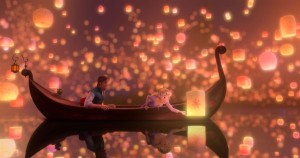 Likewise, there’s no noble knight on a quest to rescue the long-vanished, kidnapped princess, but rather just a charming yet hapless prince of thieves who inadvertently stumbles into her life. While we’re used to dashing heroes brandishing swords, the weapon of choice here is a frying pan, a self-reliant woman’s kitchen weapon of opportunity if there ever was one. For most of the movie, we’re meant to believe Rapunzel’s power is intricately tied to the beauty of her golden hair, and in the most profound moment, viewers of all ages and sexes are reminded that it is what is inside that matters the most.
Likewise, there’s no noble knight on a quest to rescue the long-vanished, kidnapped princess, but rather just a charming yet hapless prince of thieves who inadvertently stumbles into her life. While we’re used to dashing heroes brandishing swords, the weapon of choice here is a frying pan, a self-reliant woman’s kitchen weapon of opportunity if there ever was one. For most of the movie, we’re meant to believe Rapunzel’s power is intricately tied to the beauty of her golden hair, and in the most profound moment, viewers of all ages and sexes are reminded that it is what is inside that matters the most.
So what does a Disney movie have to do with the Star Wars Expanded Universe? Most importantly, it matters because the EU is struggling much like Disney had been. Think about The Princess and the Frog, which garnered critical acclaim but failed to deliver at the box office. Looking forward to Tangled, Disney realized it wasn’t going to succeed with a princess movie by just appealing to the girls. Unfortunately, the Star Wars EU hasn’t seemed to have quite hit upon the realization that it’s not going to reach new levels of sucess by appealing strictly to the fanboys.
But there’s more to it than that. When Irvin Kershner died last month, almost every article contained the same quote from the director of The Empire Strikes Back.
“It took a few years for the critics to catch up with the film and to see it as a fairy tale rather than a comic book.”
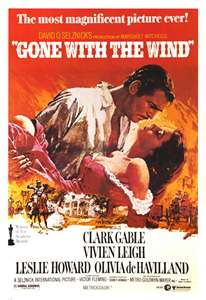
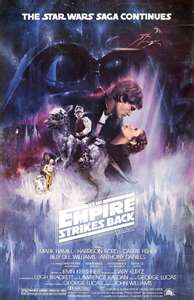 Star Wars is George Lucas’ phenomenon, but there’s a pretty strong consensus among diehard and casual fans alike that the Kershner-directed The Empire Strikes Back is the best movie of the six. With its movie poster homage to a female favorite Gone With The Wind and a fairy tale storytelling style, the movie was intended to captivate more than just male fans. The trouble was, for Kershner, that the original Star Wars (later known as A New Hope) was a comic book, and comic books stories have historically appealed somewhat less to everyone and more to men. A recent MSNBC article sums up Kershner’s philosophy by quoting the director –
Star Wars is George Lucas’ phenomenon, but there’s a pretty strong consensus among diehard and casual fans alike that the Kershner-directed The Empire Strikes Back is the best movie of the six. With its movie poster homage to a female favorite Gone With The Wind and a fairy tale storytelling style, the movie was intended to captivate more than just male fans. The trouble was, for Kershner, that the original Star Wars (later known as A New Hope) was a comic book, and comic books stories have historically appealed somewhat less to everyone and more to men. A recent MSNBC article sums up Kershner’s philosophy by quoting the director –
“For the first film the actors had it in their minds that this was a comic book brought to life,” Kershner said. “They acted partly tongue and cheek. When I decided to do the second film, I said to myself that this is the second act of a three-act trilogy.
“When I met with the stars, I said, ‘I have been thinking about the film and I have come to a conclusion, this is a fairy tale, not science fiction. As a fairy tale, you have to play it straight, dramatic.’ So I read Freud and Jung about what fairy tales are and that gave me a fix for what the film should look like.”
Considering Kershner is one of the few men in the history of film to have improved on an original, his words very much ought to be relevant as the Powers That Be work to regain their footing in the realm of books and comics. Star Wars isn’t ever going to be a Disney fairy tale with talking chameleons and fairy godmothers, but the EU does need to become more aware of the full breadth of their audience and not discount its potential by telling only comic book stories, or any other tales that only fascinate the male half of the consumer base.
Finally, it’s important to remember that Star Wars, in its movie form, always had a princess. First Leia, then Padmé. Both women captivated female fans and seduced the male fans; they were tragic and heroic figures. The EU, too, had its equivalent of princesses in Mara Jade and Jaina Solo, both of whom had their first appearances in the very origins of the modern EU, Tim Zahn’s Thrawn trilogy. Yet even with two women at the editorial helm, Sue Rostoni at Lucasfilm and Shelly Shapiro at Del Rey, the EU managed to snuff out one and stuff the other in a proverbial box. Given that in recent years more fictional material has been created to capture the imagination of women, it certainly hasn’t come as a surprise to female fans that Star Wars book sales are flagging.
Perhaps what Tangled has done is proven that fairy tales, even if the happiness truly is fleeting, really do matter. I hope that, like a sage Force-ghost, Irvin Kershner’s words echo down the halls of Lucas Books, Del Rey and Dark Horse. And more importantly, that unlike Luke in Episode V, the Powers That Be listen.
- Hyperspace Theories: The Curious Case of Kathleen Kennedy’s Retirement - March 10, 2025
- Hyperspace Theories: SKELETON CREW Ahoy! - December 29, 2024
- Hyperspace Theories: WICKED Part I Rises to the Moment - December 6, 2024

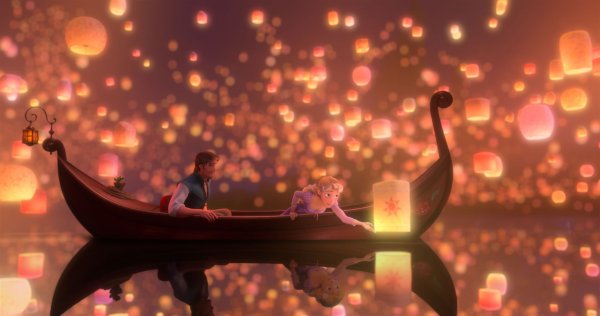







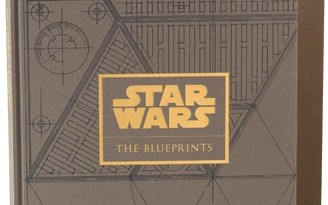


AMEN! The EU has been far to focused on being ‘realistic’ and ‘gritty’. I don’t want real life crap in my Star Wars. I want to be taken to a galaxy far, far away. And they’ve totally lost the balance that made Star Wars so wonderfully appealing to everyone. Action is important with piloting, lightsaber fights and blasters but there also needs to be humor and romance. We need to be able to look up to our heroes as well as relate to them. Dragging them thru the dumps to prove they are only mortal is getting old.
I think the key word you use is “relate” – it’s hard to aspire to be like heroes if we can’t relate to them.
Borrowing from your term ‘gritty’, less grit in the brownie sundaes, please.
Pingback:Tweets that mention Getting Tangled in the Star Wars EU « fangirlblog.com -- Topsy.com
If I could be optimistic (in a cynical way) for a moment – I THINK part of the reason Jaina’s gotten shunted aside, at least recently, is that they want to replace her with the newer model of Allana, much as Jacen got thrown under a bus in order to move the title of “Second-Gen Main Male Character of Skywalker Descent” to Ben. (That’s purely my theory, of course – but isn’t it convenient that Jacen got killed off in the same series where Ben got almost all of his character development?) Unfortunately, the writers haven’t quite realized that Ben was a teenager, which enabled them to put him in a main-character position, whereas Allana hasn’t hit her teenage years yet, which leaves a big gap.
That’s giving them too much credit, though, as there actually are MORE EU ‘princesses’ than Mara and Jaina – Tenel Ka is the most obvious example, and Tahiri could have filled the Female Action Jedi role that Mara and Jaina previously filled, if they were still going to refrigerate Mara and send Jaina to sit around in the Refresher of Love. Unfortunately, authors seem bizarrely unwilling to explore Hapan politics (eliminating the possibility of having Tenel Ka be Leia’s successor to the plot role of Politician-Jedi) – or, for that matter, to involve Tenel Ka as a main character at all. (It just occurred to me that there are HORRIBLE potential Unfortunate Implications to Tenel Ka’s story-noninvolvement after Allana got handed over to the Solos – after a female character pops out a baby, she has served her purpose – and I really hope that’s just a paranoid figment of my imagination.)
Likewise, authors also seemed to drop Tahiri off the main-character roster after the end of the NJO, and followed up by having her become Jacen Solo’s completely dignity-free puppet. I know there are plots where male characters are manipulated through their dead lovers, but I’d argue that their exploitation is treated as a tragedy. I would give Orson in Fire Emblem 8 and Yueh in Dune as examples off the top of my head – both betrayed their lords for the promised return of their dead wives. However, Orson was depicted as an honorable knight driven completely mad by the loss of his beloved wife [he was contented with what was heavily implied to be a hideous zombie capable only of repeating “Darling”], and Yueh, who was also depicted as an honorable, completely loyal doctor before being blackmailed, used his betrayal as a cover for an assassination attempt on the man who had kidnapped and secretly [though Yueh guessed] killed his wife. As such, they both got to go down with a perverse sort of loyalty and honor, and the part of the emphasis of their stories was how far they had fallen. Similarly, Nergal in Fire Emblem 7 drove himself mad trying to gain immense power, and during a secret sidequest, it was heavily implied that his obsession was driven by his guilt in being unable to save his dragon wife from human hunters. Said sidequest also depicts him in a flashback to 1000 years ago as being a caring father and husband, whereas in the present, he’s the fantasy equivalent of a stark-raving-mad Sith Lord – again, the emphasis being on how far he had fallen. Even Caedus got a bit of that treatment in Invincible with the flashbacks to Jacen’s youth, though it didn’t mesh very well with everyone insisting that noooooo, Caedus wasn’t Jacen, Jacen was dead, he had died at the end of the Yuuzhan Vong War, etc.
However, Tahiri got NO such treatment, and NO ONE observed that being a thirty-something Sith apprentice trying to feel up a 14-year-old was a long way to fall from the Tahiri Veila who had fought in the Yuuzhan Vong war, survived the loss of her boyfriend and many of her friends, overcome and incorporated an alternate personality implanted in her by brainwashing, etc. etc. Hence why I say her exploitation was particularly without dignity.
To sum up – it’s not even that Mara and Jaina are the EU princesses, but that the EU refuses to use ANY of the available princesses except for Allana (and, possibly, Vestara). In fact, come to think of it, Vestara is Mara 2.0, isn’t she? Hmm, I wonder who’s going to be the newer, prettier Leia?
And it’s worse than even that, I think… Let me get my tinfoil hat on, and let’s see if what I say from where on out makes any sense at all. I apologize in advance for my paranoia regarding current marketing strategies and, possibly, insulting the intelligence of well-intentioned authors by suggesting they’re actually trying what they might be trying. I certainly hope I’m wrong.
With Young Jedi Knights, Jaina, Tenel Ka, and Tahiri were all unconventional tomboys – Jaina’s Wookiepedia article notes that “Young Jedi Knights authors Kevin J. Anderson and Rebecca Moesta chose to portray Jaina Solo as a logical and mechanical-minded tomboy, taking after her father, rather than a “typical girl” character”, and Tenel Ka and Tahiri had unusual mannerisms that helped set them apart from “Character #29291”. However, as far as I can see, Allana has no personality traits that really make her stand out from “Generic Character #392”, aside from having a pet nexu. Jaina is also losing her personality traits in favor of becoming the Sword of the Jedi and Jag’s soap-opera girlfriend on alternating days of the week, Tahiri has lost her personality and become defined by her relationship to Anakin and Jacen, and Tenel Ka might have lost more of her personality if she appeared more often. This is a fact.
Joking aside, I wonder if the recent authors are attempting to pull a Bella Swan (from Twilight) maneuver, by which I mean that they may be following in the footsteps of Stephenie Meyer’s admission that she deliberately made Bella low on personality so that girls could more easily insert themselves in her place. Therefore, if they were trying to mimic that in the romance aspect, they would core out the personalities of the women and stuff in romance plots in order to draw the hypothetical female audience that cares mostly about romances and gives not a whit for characterization.
Continuing this theory, as long as they were doing such a thing, they might attempt to pull a two-pronged maneuver by making the male characters into vehicles for hypothetical male readers to live through as well. The cheapest and most stereotypical way to do this would be to make the adult males Darker and Edgier, kick off a cliff anyone who refuses to be an Action Male, and consolidate next-generation males into a single teenager with incredible powers for his age, stated-in-the-text intelligence (whether this meshes with his actual actions is irrelevant), and plenty of witty lines. Oh, yes, and a hot, exciting girlfriend whom he must save from herself, because the stereotypical male wants an entertainingly active girl who will nonetheless demurely bow her head to him at the end of the day, just as the stereotypical female wants a very attractive dysfunctional sociopath who has chosen her as his therapist.
Doesn’t that sound a lot like what’s been happening in the last several books of the EU?
Now, this approach is absolutely demeaning to both female readers and male readers, and insults the intelligence of the audience as a whole, but I worry that the EU authors are taking this route. Even worse, in light of the flagging sales numbers (caused by the plot degradation this method causes), I think they’ll get even more vigorous about it, and thereby risk an EU death spiral.
Now, what’s the relevance of this to the original YJK characterizations? Well, back then, tomboys were “in”. So were goofy characters, weird characters, etc. and over-the-top plots motivated by the Rule of Cool. The stream of superweapons was probably also supposed to call back to the original trilogy – the “comic book brought to life” feel Kershner mentions. As such, those books were driven by marketing, as well, but it was a kind of marketing focused on making readers think “Ooh, this looks interesting/cool!”
However, nowadays, book-marketing is scummier – it’s focused on treating the audience as a collection of traits and desires, rather than as people the writers want to appeal to. As such, popular books are becoming more of a haphazard mesh of “cool” scenes and cheap attempts at reeling in cash monkeys – er, readers – than objects possessing coherent storylines and characters with consistent personalities. Hence why the EU, which I believe has always been marketing-driven, might have fallen in quality so drastically – what “marketing-driven” means has changed dramatically in the last decade or so.
To wrap my rambling up on a lighter note, though, I believe this strategy is self-defeating. The classics which endure ARE books with good, or at least decent, plots and characterizations. One does not write as many books as Heinlein (to pick one example) did without being fond of royalty checks, yet his books still endure today – and they’re still selling because they’re entertaining, not because they included gobs of violence or cardboard romance or any such thing. Entertainment will win out in the end over appealing to the so-called “lowest common denominator”, because it sells better in the long run. Not only that, but it keeps people coming back – and for authors/series that put out a lot of books, that’s extremely important.
Now, let’s just hope Del Rey figures this out in time… (Assuming this is what they’re trying, of course. I hope I’m just being off-the-wall paranoid at a Revenge-of-the-Sith level. “Anakin, the LOTF-bashers are evil!” “From my point of view, the authors are evil!” “Then you are lost!” :) )